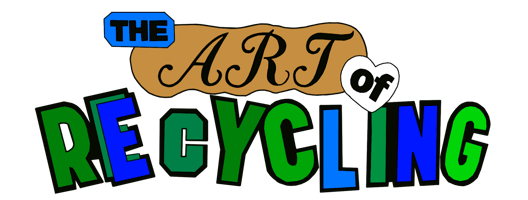Waste To Art
The Cabinets Of Curiosity


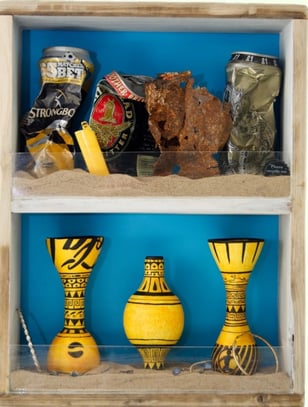

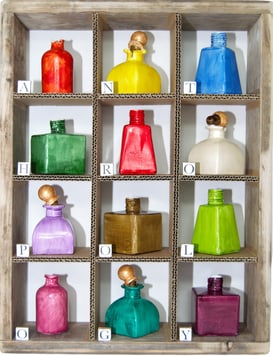


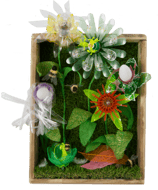
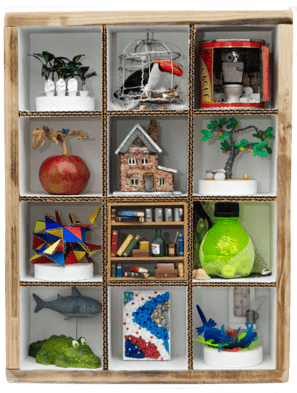

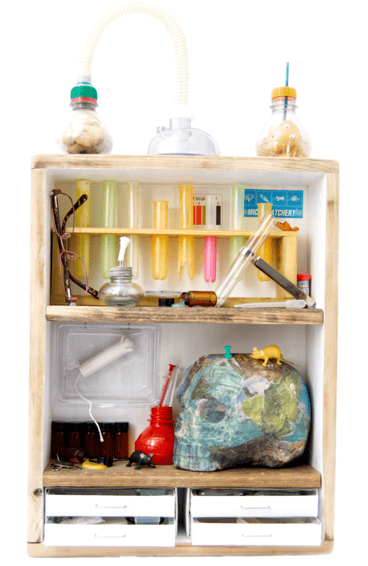


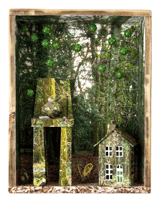
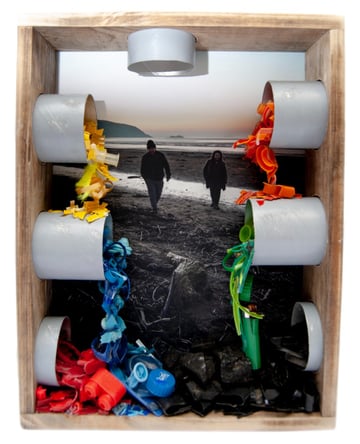

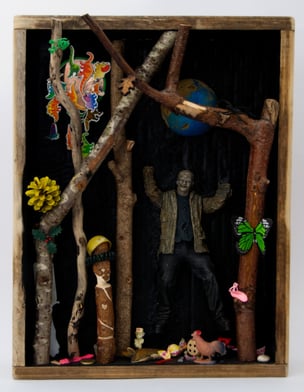

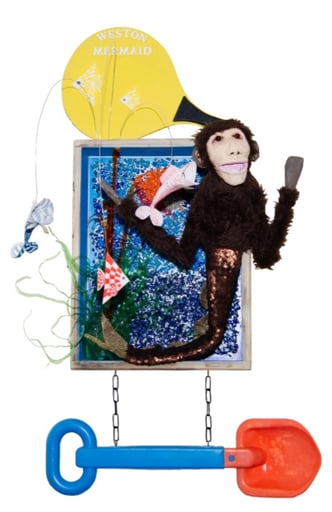

From the 15th century to the 17th century, cabinets of curiosity were in vogue, marking an age of exploration and discovery. During this period, we ventured to unseen places and collected strange creatures, plants, and objects to showcase to our friends. In the present Anthropocene era, human activity has had a profound impact on the planet. This collection of cabinets was created for my university's end-of-year exhibition in 2020, highlighting the severity of the current waste problem.
The materials used in these cabinets were predominantly sourced from litter-picking efforts, helping to clean up our streets and beaches. The boxes themselves were constructed from used apple crates, each measuring W33.5cm x H43.5cm x D9.5cm. Each cabinet tells a unique story through its title.
The Inspiration:
During a litter-picking adventure at Sand Bay, I gathered a collection of curious items. The background photo is of Sand Bay, and the curiosity box displays my finds: a spent candle, an empty miniature bottle of Jack Daniels, an unopened banana-flavoured condom, a piece of driftwood, and a lighter. These items felt like clues to a romantic occasion through their littering. Picking up litter often feels like being a detective, uncovering stories left behind. I found the wooden sailboat and miniature Whitley Neill bottle locally. The rope ladder, wedding bands, and picnic blanket are handmade. The story unfolds as you imagine it—a tale of Jack Daniels and Whitley Neill washing ashore, leaving behind their debris.
‘Amour’
Julie Ackerman,
Mixed Media 2020
W 33.5cm x H 43.5cm x D 9.5cm
‘Brands In the Sand’
Julie Ackerman,
Mixed Media 2020
W 33.5cm x H 43.5cm x D 9.5cm
The Inspiration
A litter pick of rusting old cans one dated from 2001, discovered on Sand Bay beach. Set in sand accompanied by plaster mouldings of branded drink bottles such as Pepsi, Irn-Bru, and Coca-Cola and a scattering of jewellery This artwork reflects the enduring human habit of littering, highlighting how the nature of waste has evolved over time.
‘One Big Experiment’
Julie Ackerman,
Mixed Media 2020
W 33.5cm x H 43.5cm x D 9.5cm
The Inspiration
The tampon applicators I found during my litter-picking on the beach resemble test tubes, drawing my thoughts towards science. Throughout history, we understood the world through belief in God, until science offered another perspective. Science inherently carries uncertainty; it evolves and is not a definitive set of truths. This artwork reflects the idea that mistakes are made, and data can be fabricated or falsified to fit desired outcomes. Consider how smoking cigarettes was once promoted for its supposed health benefits.
The Inspiration
While observing the variety of colourful plastic bottles in shops and on the streets, their allure inspired me to create a manmade garden from these discarded items. This piece is an exploration of the possibilities with plastic. The lightbulb flower centres serve as a reminder that plastic is derived from fossil fuels and is a significant contributor to greenhouse gas emissions.
‘Waste Pipes’
Julie Ackerman,
Mixed Media 2019
W 33.5cm x H 43.5cm x D 9.5cm
The Inspiration
This piece was inspired by a litter-picking adventure along Sand Bay, depicted in the background picture. During the outing, I collected a rainbow of broken plastic. Research reveals that improper waste disposal often leads to litter being carried by wind and rain into waterways, including storm drains, or being flushed down the toilet. The inclusion of coal in this artwork connects the production of plastic to its significant contribution to climate change.
The Inspiration
This cabinet features Weston Woods as its backdrop, a stunning natural asset in North Somerset and a place dear to my heart. Trees play an essential role in the ecosystem; hence, I incorporated them abundantly, even covering a broken egg. Created from repurposed cardboard and other scraps, this artwork carries a surreal quality. The spores symbolize the COVID-19 pandemic. The scene captures the beauty of living in harmony with nature while also highlighting the failure of world leaders, represented by the large chair and broken egg, to address the most pressing ecological issues
‘Forest Spores’
Julie Ackerman,
Mixed Media 2020
W 33.5cm x H 43.5cm x D 9.5cm
The Inspiration
A cabinet of curiosity was a collection of the weird, wonderful, and fake, where faking it was common practice. The British Museum's Fiji mermaid, composed of a monkey's torso and head attached to a fish's tail, exemplifies such fabrications. In my cabinet, I've acknowledged this fact and showcased my mermaid in a seaside theme. The background features melted bottle tops, seaweed crafted from plastic bottles, and fish made from cut-off pieces of vertical blinds. The remaining elements are found objects from the Weston seafront.
‘Weston Mermaid’
Julie Ackerman,
Mixed Media 2020
W 33.5cm x H 43.5cm x D 9.5cm
The Inspiration
This artwork highlights 'Found Objects' gathered from the streets of Weston-super-Mare, including fallen branches from Clarence Park. It combines elements of darkness, monsters, toys, and sweets. 'Lost Toys' represents a cabinet of childhood. It reflects the notion that some forms of littering are unintentional, often stemming from children outgrowing and no longer valuing their toys.
‘Lost Toys’
Julie Ackerman,
Mixed Media 2020
W 33.5cm x H 43.5cm x D 9.5cm
‘Gallery Of Themes’
Julie Ackerman,
Mixed Media 2020
W 33.5cm x H 43.5cm x D 9.5cm
The Inspiration
The ‘Gallery of Themes’ is a collection of 12 small recycled art pieces. It was an exploration of materials and their possibilities. I asked myself questions: What can I do with an old treacle tin? Put a toilet in it. What can I do with wire and plastic garden ties? Make a tree. What can I do with a blister packet? Put wire plants in it.
One by one, I discovered uses for paper, cardboard, plastic, and a tin can, which ultimately led to the creation of the Gallery of Themes.
‘Anthropology’
Julie Ackerman,
Plaster Casts 2020
W 33.5cm x H 43.5cm x D 9.5cm
The Inspiration
Anthropology is the scientific study of humans, both past and present. It encompasses culture, languages, behaviour, belief systems, social structures, institutions, and material goods. For this cabinet, I wanted to explore another use for glass. I experimented with mold making and plaster casting using four attractively shaped glass bottles. Each compartment of the cabinet contains a hand-painted plaster cast and a letter assigned to it, spelling out the word "Anthropology."
‘Flower Garden’
Julie Ackerman,
Mixed Media 2020
W 33.5cm x H 43.5cm x D 9.5cm
Clay Sculptures
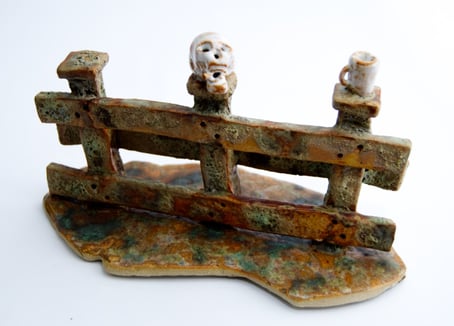

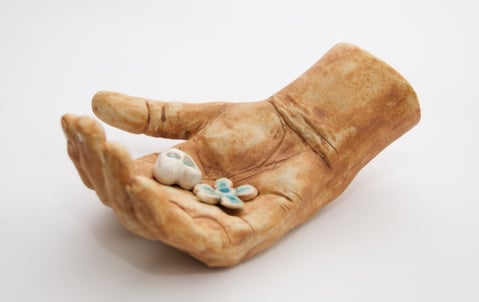

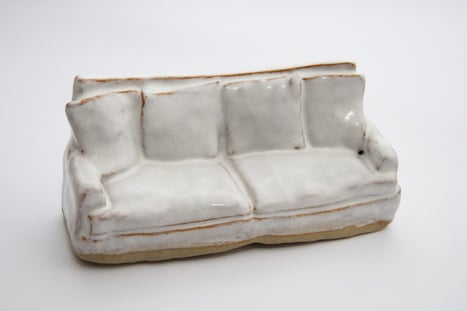

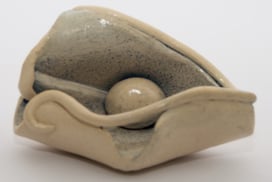

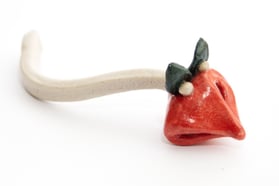

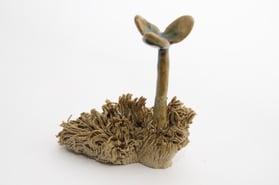


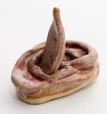
I particularly enjoy working with clay, as its plasticity allows me to shape my creative ideas. Among my environmentally themed pieces are:
‘Mother Nature’: A depiction of nature's gradual deterioration.
‘Sit on the Fence’: A reflection on government inaction regarding ecological extinction.
‘The Anthropogenic Hand’: Illustrating human influence on nature.
Environmental Themes in My Clay Work
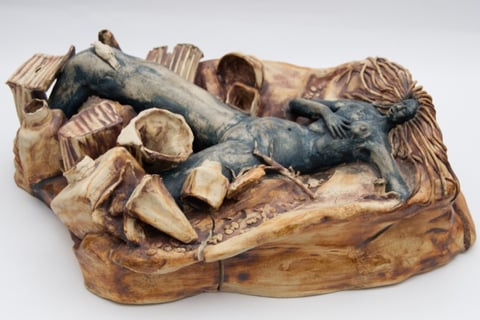

Shell with an Egg
A New Plant Form
A Spoon and Ear
The Anthropogenic Hand
My Sofa
Mother Nature
Sit On The Fence
A Seedling
Multi Media Sculptures
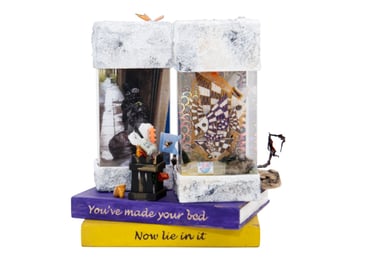


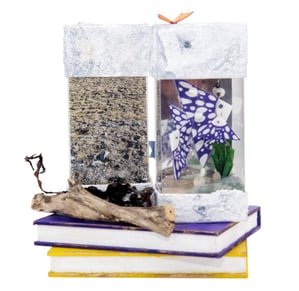

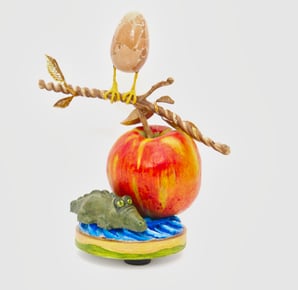
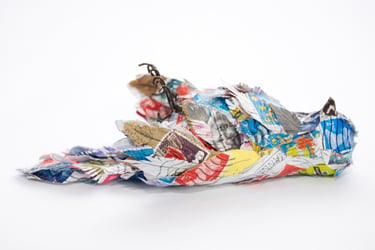

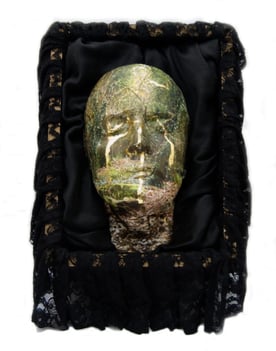

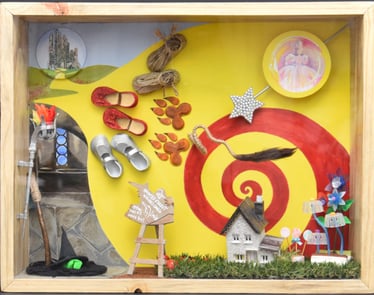

These multi-media sculptures are crafted from an eclectic mix of natural and manmade materials. From delicate eggshells and nostalgic old stamps to the humble beauty of wood, wire, newspapers, fabrics, lace, bottle tops, seaweed and plastic bottles, each piece revitalised and given a new role to play. Sustainable and creative works of art tell a compelling story of transformation and renewed value.
Collages from Avon Booklets

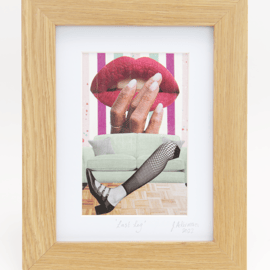
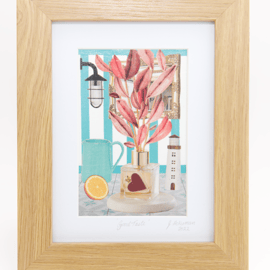
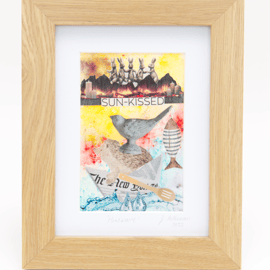
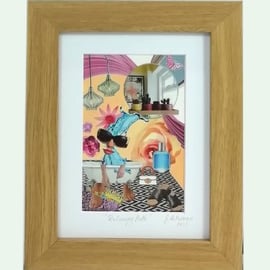


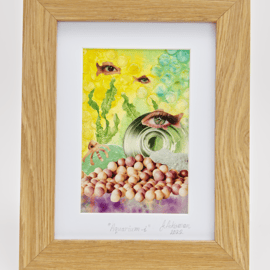
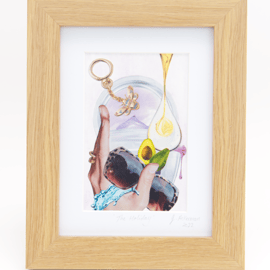
The COVID-19 pandemic changed the usual routine for the Avon Lady. She no longer collected the Avon booklets; instead, they were delivered, and orders were made via mobile phone. With an abundance of these booklets at hand, I created a series of nine collages:
1. Treasured Memories
2. Last Leg
3. Good Taste
4. Heat Wave
5. Relaxing Bath
6. Tree of Parts
7. Pretty Birdie
8. Aquarium-i
9. The Holiday
From Left to right:
Drawings
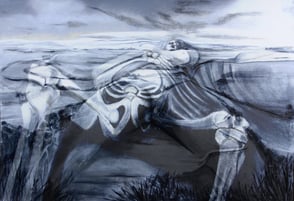
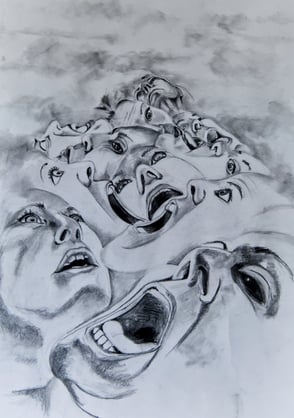
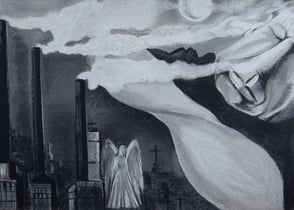
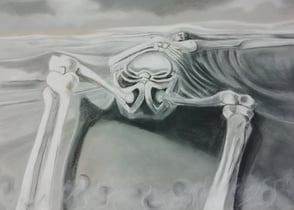
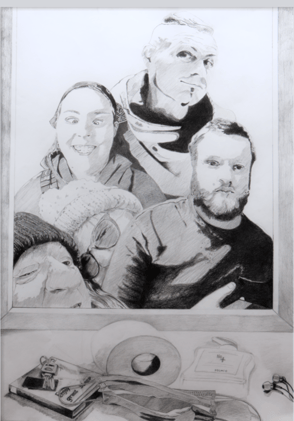
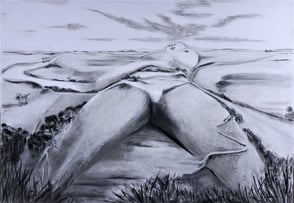
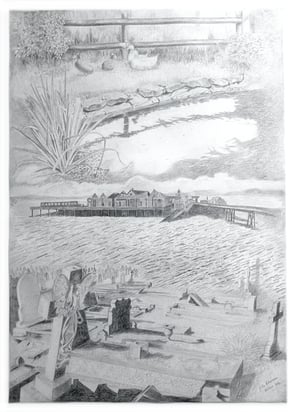

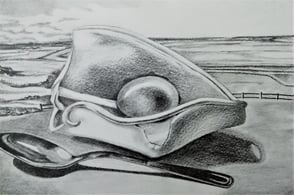









My drawings, created using pencil, charcoal, and chalk, sometimes undergo digital manipulation. This process helps me to visualize and develop my ideas. Each piece reflects environmental themes and significant moments in time. For instance, during the COVID-19 pandemic, I created a family drawing that brought us together on one piece of paper. The piece ‘Screaming Faces’ channels my anxiety and frustration over climate change. Amidst these works is ‘Sense of Place’, a quest for peace in my hometown.
Transformative art that speaks to environmental issues. Each piece not only showcases creativity but also inspires deeper thoughts on sustainability and the beauty of discarded materials.
Sophia Lee

★★★★★
